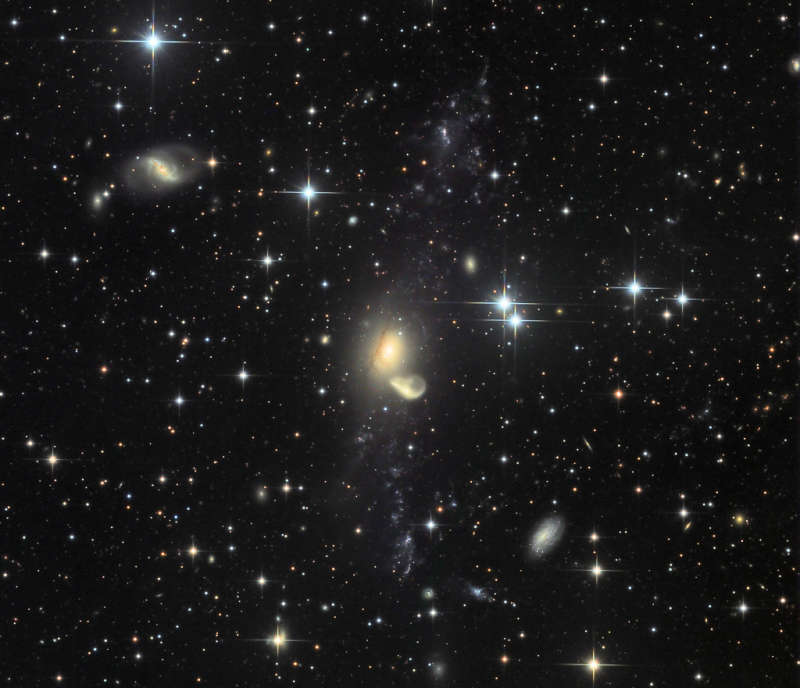
|
Credit & Copyright: CHART32 Team,
Processing -
Johannes Schedler
Explanation:
Following an
ancient
galaxy-galaxy collision
200 million light-years from Earth, debris from a gas-rich galaxy,
NGC 5291, was flung far into intergalactic space.
NGC 5291 and the likely interloper, also known as the "Seashell"
galaxy, are captured near the center of this spectacular scene.
The
sharp,
ground-based telescopic image
looks toward the galaxy cluster Abell 3574 in the
southern constellation Centaurus.
Stretched along the 100,000 light-year
long tidal tails,
are clumps resembling dwarf galaxies, but
lacking old stars, apparently
dominated by young stars and active star forming regions.
Found to be unusually rich in elements heavier
than hydrogen and helium, the dwarf galaxies were likely
born in intergalactic space,
recycling the enriched debris from NGC 5291 itself.
|
January February March April May June July August September October November December |
| |||||||||||||||||||||||||||||||||||||||||||||||||||||||
NASA Web Site Statements, Warnings, and Disclaimers
NASA Official: Jay Norris. Specific rights apply.
A service of: LHEA at NASA / GSFC
& Michigan Tech. U.
Based on Astronomy Picture
Of the Day
Publications with keywords: interacting galaxies
Publications with words: interacting galaxies
See also:
- Galaxies in the River
- APOD: 2025 August 19 Á Giant Galaxies in Pavo
- APOD: 2025 June 1 Á UGC 1810: Wildly Interacting Galaxy from Hubble
- APOD: 2025 March 12 Á NGC 772: The Fiddlehead Galaxy
- Peculiar Galaxies of Arp 273
- APOD: 2025 January 6 Á Colliding Spiral Galaxies from Webb and Hubble
- Shell Galaxies in Pisces
